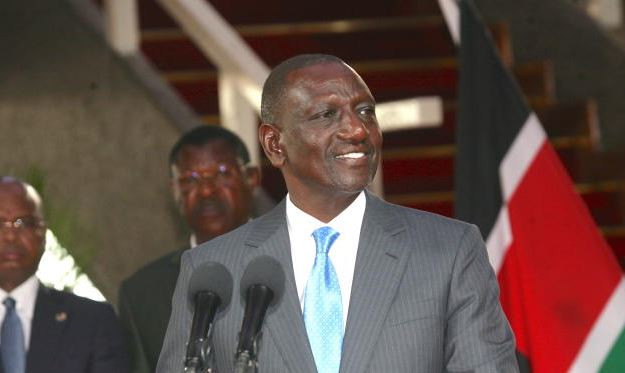
As the sun set over the vibrant cityscape of Istanbul, I found myself reflecting on the profound insights and experiences gathered during our study tour in Turkey. Representing a delegation of government officials from various ministries and private sector leaders from Somalia, our mission was clear: to explore and understand the intricacies of Public-Private Partnerships (PPP) and envision how these partnerships could be harnessed to fuel Somalia’s ambitious plan, the National Transformation Plan (NTP) 2025-2029.
Our journey took us through the heart of Turkey’s infrastructure marvels, from the impressive Northern Marmara Highway and the 3rd Bosphorus Bridge to the world-renowned Ankara Bilkent City Hospital, Ankara Airport and the cutting-edge Eurasia Tunnel. Each of these projects is a testament to the transformative power of PPPs, where the collaborative efforts between the public and private sectors have resulted in an infrastructure that not only meets but exceeds global standards.
We began our tour with a warm reception by Mr Ilhan Hatipoğlu, the Deputy Minister of Treasury and Finance, at the Ministry of Treasury and Finance, Emek Campus in Ankara. The Somalia delegation, led by Abdiqafar Elmi Hange, Deputy Minister of Finance, expressed our collective enthusiasm for the potential of PPPs. In his remarks, Abdiqafar hinted that it is the right time for Somalia to take PPPs forward as part of its post-HIPC strategy, emphasizing the importance of leveraging these partnerships to accelerate our national transformation agenda.
The opening sessions provided a comprehensive overview of Turkey’s PPP legal framework and regulatory environment. Turkey has strategically employed various PPP models tailored to specific sectors to drive infrastructure development and improve public services. The Build-Operate-Transfer (BOT) model in the transport sector, Build-Own (BO) in the energy sector, and Build-Lease-Transfer (BLT) in the health sector have been pivotal.
In contrast, the Philippines and Malaysia use the BLT model for airports and public transport, the US and India employ the BO model for the energy sector, and Brazil and South Africa effectively use the Transfer of Rights model for transportation. While different countries apply different models, they commonly use PPP to create value for money and efficient risk transfer.
Relevance to Somalia: PPPs as Catalysts for Transformation
The relevance of PPPs to Somalia cannot be overstated. As we embark on the ambitious path laid out by the NTP, the focus on private investments, job creation, and improved government performance is paramount. PPPs offer a structured framework to achieve these goals by leveraging private sector expertise, efficiency, and capital.
Somalia has long considered implementing PPPs, but it is now, under the visionary leadership of Prime Minister Hamza Abdi, that we see a committed drive to move forward with these initiatives. This momentum aligns seamlessly with the broader Vision 2060 spearheaded by President Hassan Sheikh Mohamud, which aims to propel Somalia into a new era of sustainable development and economic prosperity.
Logistics infrastructure: The promise of PPPs in Somalia’s NTP
One of the most promising areas for PPPs in Somalia is the logistics infrastructure sector. Our discussions in Turkey highlighted the critical importance of modern and efficient transport networks in supporting economic activities. In Somalia, establishing a separate lab focused on logistics infrastructure under the NTP can pave the way for significant advancements in this sector.
Imagine modern airports that facilitate increased trade and tourism, ports that become gateways for international commerce, and highways and bridges that connect remote areas, fostering inclusivity and development. Additionally, building new fishing ports will bolster our fishing industry, providing more employment opportunities and contributing to food security.
The construction of regional roads that connect all regions will not only enhance domestic trade but also increase trade volumes with neighboring countries. This connectivity is crucial now that Somalia has joined the East African Community, as it will enable our goods to reach broader markets, fostering regional economic integration and growth. Each of these projects can attract substantial private investments, driving job creation and economic growth. The collaborative efforts in these labs will ensure that these projects are not just dreams but achievable milestones, bringing in investors and stakeholders who share a common vision of a prosperous Somalia.
Energy Sector: Powering Economic Transformation
Somalia's energy sector is another critical area where PPPs can drive transformative change. Our nation is energy-hungry, and a reliable power supply is essential for economic development. The NTP prioritizes energy infrastructure, recognizing that access to affordable and sustainable energy is a cornerstone of industrial growth, improved living standards, and overall economic resilience.
Through PPPs, Somalia can attract investments in renewable energy projects, such as solar and wind farms, which are abundant given our geographical location. Additionally, modernizing existing power plants and expanding the electricity grid to rural areas will provide much-needed energy for households and industries. These initiatives will not only meet the current energy demands but also ensure future growth and sustainability. The PPP model allows for shared risks and rewards, making large-scale energy projects viable and attractive to private investors.
Healthcare: Transforming Somalia’s health infrastructure
During our tour, one of the standout visits was to the Ankara Bilkent City Hospital. This massive healthcare facility, with a bed capacity of 4,050 and indoor space of 1.3 million square meters, is the largest hospital in the world constructed as one piece. It stands as a model for how PPPs can deliver state-of-the-art healthcare infrastructure. In contrast, Somalia’s healthcare infrastructure is in dire need of heavy investments. Many of our citizens are forced to travel abroad for medical treatment, incurring significant costs. By developing similar healthcare facilities through PPPs, we can drastically reduce these costs, provide quality healthcare at home, and improve the overall health outcomes of our population.
Tourism facilities: Unlocking economic potential
Another area ripe for PPPs is tourism. With its rich cultural heritage, stunning landscapes, and historical significance, Somalia has immense potential to become a sought-after tourist destination. By developing world-class tourism facilities through PPPs, we can not only attract more visitors but also create numerous job opportunities, boost local economies, and promote cultural exchange.
Consider the former government-owned hotels like Juba and Uruba in Mogadishu. Revitalising these hotels and transforming key government-owned installations into hotels, apartments, malls, and offices can generate significant revenue, create jobs, and contribute to security. This not only revives our tourism sector but also ensures that these historical landmarks are preserved and utilized effectively.
Addressing unemployment and security through PPPs
One of the most pressing challenges in Somalia is youth unemployment, which significantly contributes to insecurity. By creating job opportunities through PPP projects, we can address this challenge head-on. Whether it’s constructing new hospitals, developing tourism infrastructure, or modernizing logistics networks, these projects will require a skilled workforce, thereby employing thousands of young Somalis. This not only boosts the economy but also enhances security, as gainfully employed youth are less likely to be drawn into activities that threaten national stability.
Key Projects and Insights from Turkey
During our tour, we had the privilege of visiting several key projects that exemplify the success of PPPs in Turkey:
Ankara Bilkent City Hospital: This massive healthcare facility, with a bed capacity of 4,050 and indoor space of 1.3 million square meters, is the largest hospital in the world constructed as one piece. It stands as a model for how PPPs can deliver state-of-the-art healthcare infrastructure.
Northern Marmara Highway and 3rd Bosphorus Bridge: These projects showcase the efficiency and scale achievable through PPPs, significantly improving connectivity and reducing traffic congestion in Istanbul.
Eurasia Tunnel: This undersea tunnel linking the European and Asian sides of Istanbul is a marvel of engineering and a testament to the transformative power of PPPs in urban infrastructure.
The way forward: Embracing PPPs for sustainable economic transformation
The lessons learned from Turkey’s successful PPP projects provide a valuable blueprint for Somalia. By embracing PPPs, we can accelerate our infrastructure development, attract private investments, and create a conducive environment for economic growth. The separate lab dedicated to logistics infrastructure will be a critical step in this direction, focusing on airports, ports, roads, highways, and bridges.
Moreover, PPPs will play a crucial role in Somalia’s post-HIPC strategy, ensuring that we build a resilient and diversified economy. The positive effects of PPPs on sustainable economic transformation are manifold – from improving public services and infrastructure to fostering innovation and creating jobs.
As we return to Somalia, we are more determined than ever to implement the insights and strategies gleaned from our Turkish counterparts. With the committed leadership of President Hassan Sheekh and Prime Minister Hamza Abdi, Somalia is poised to harness the full potential of PPPs, driving forward our National Transformation Plan and paving the way for a brighter, more prosperous future.
The writer is Deputy PS, Office of the Prime Minister, Somalia. Abdullah Adan, Director General of the Ministry of Water and Energy and Amina Osman, Private Sector led growth advisor, Office of the Prime Minister contributed to the article.
 The Standard Group Plc is a multi-media organization with investments in media
platforms spanning newspaper print operations, television, radio broadcasting,
digital and online services. The Standard Group is recognized as a leading
multi-media house in Kenya with a key influence in matters of national and
international interest.
The Standard Group Plc is a multi-media organization with investments in media
platforms spanning newspaper print operations, television, radio broadcasting,
digital and online services. The Standard Group is recognized as a leading
multi-media house in Kenya with a key influence in matters of national and
international interest.
 The Standard Group Plc is a multi-media organization with investments in media
platforms spanning newspaper print operations, television, radio broadcasting,
digital and online services. The Standard Group is recognized as a leading
multi-media house in Kenya with a key influence in matters of national and
international interest.
The Standard Group Plc is a multi-media organization with investments in media
platforms spanning newspaper print operations, television, radio broadcasting,
digital and online services. The Standard Group is recognized as a leading
multi-media house in Kenya with a key influence in matters of national and
international interest.








